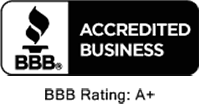Signs Of Rodent Infestation
Remember that not all types of rodents carry hantavirus. Neither common house mice nor common rats have been associated with HPS in humans, for example. Yet because it can be tough to tell just what kind of rodents you have, play it safe — clean up the infestation and rodent-proof your home or workplace.
Here are some common signs that you may have a rodent problem.
Rodent Droppings
This is one of the most reliable signs that you have a rodent problem. You may find droppings in places where you store your food or your pet/animal food, such as in cupboards and drawers or in bins. Because mice like to run in places that offer them some protection from predators, you may find droppings in cupboards or under the sink, along walls, or on top of wall studs or beams. Mice will leave droppings near their nests as well (see below). Storage rooms, sheds, barns, or cabins loaded with boxes, bags, old furniture, and other objects make anideal home for rodents, so you may find droppings there, even inside boxes and other containers.
Workplaces can also make good rodent homes. Warehouses, restaurants, and the like are obvious places to look because food may be plentiful there. However, rodents can infest office buildings, too. Once again, look for droppings in protected places, such as closets, storage rooms, or inside boxes.
Signs of Rodent Nests
Rodents tend to build their nests from materials that are soft, fuzzy, or warm. Among common rodent nest materials are shredded paper, bunches of dry grass or small twigs, fabric, andfurniture stuffing. Rodents will nest wherever safety from enemies can be found close enough to food and water, and they prefer places that are relatively quiet. Inside buildings, here are some places to look:
- inside cabinets
- under or inside dressers
- in and among boxes
- behind and inside machinery and appliances (kitchen appliances such as stoves or refrigerator drip pans; water coolers; and electric motor cases or computer cases)
- inside upholstered furniture
- inside double walls or the space between floors and ceilings.
Food Boxes, Containers, or Food Itself That Appears To Be Nibbled
Look for droppings nearby. Rodents can chew through plastic, so plastic bags do not make safe food storage containers.
Signs of Rodent “Feeding Stations”
These are semi-hidden spots where rodents eat food they have collected. At these stations, rodents may leave larger-than-normal amounts of droppings/urine, plus remnants of a variety of foods (such as nut shells), bits of plastic or paper, and cockroach carcasses.
You Find Evidence of Gnawing
To get to food, rodents will gnaw on almost anything that is softer than the enamel of their teeth. This includes such things as wood, paper board, cloth sacks, and materials even harder than these. Because rodents’ teeth grow continuously, they must gnaw to keep them short. That may help to explain why chair legs or similar surfaces show gnawed spots or tooth marks in rodent-infested places.
You Notice an Odd, Stale Smell
In closed-up rooms infested by rodents, you will commonly smell an unusual, musky odor.
You See a Mouse in Your House
Rodents are normally active at night, and generally avoid humans. If you have rodents, unless the infestation is large, you may never see one.




